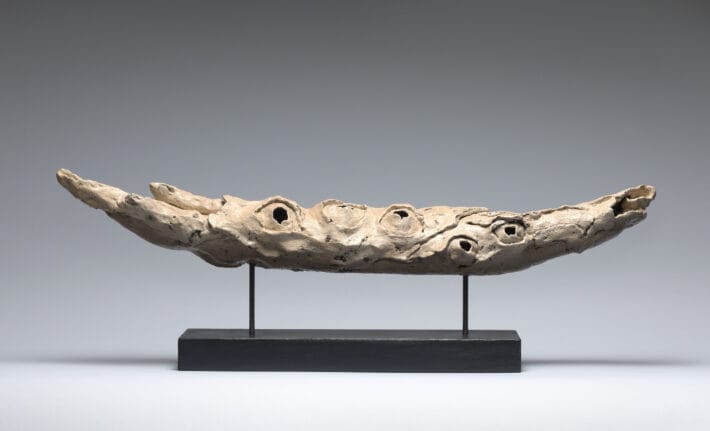
“Toyonaga’s works … recall the hybrid monsters of Japanese TV animation films,” wrote the Guggenheim curator Alexandra Munroe in Toyonaga’s 2006 exhibition catalog. Unlike other artists of his generation, such as Takashi Murakami and Kenji Yanobe, who have subsumed popular Japanese culture, Toyonaga establishes a tension between the control and the resistance, the artificial and the organic, between homogeneity and disturbed individuality. His sculptures are provocative; they can, in fact, be unpleasant, triggering in their viewers memories of pain and suffering. Toyonaga deliberately creates these disturbing objects, a counter to the superficiality of today’s Japanese culture, as explained by Murakami-the collective effort to transform Japan’s horrendous experience of nuclear annihilation.
Toyonaga’s earliest works, produced in his Manhattan studio, are characterized by geometric structures that evoke germinating seeds that blossom into surrealist flowers. The valves and pipes in some of his other pieces elicit images of the plumbing and waterworks intrinsic to an urban infrastructure, and recall the rezoning projects that rose during Japan’s bubble economy, when rapid gentrification and commercial development ravaged traditional landscapes and disrupted the lives of ordinary people. Restrictions and administrative constraints are conveyed via the thrust of pipes that firmly fix the growth from the seeds and the valves controlling the flow of water. In works created at his Port Chester, New York, studio, control and resistance metamorphose into eerie robotic growths, penetrating the outer shell of fossil-like organic structures.
Toyonaga’s earlier clay objects of the 1990s take on a reddish, earthen hue, characteristic of reduction firing. His works evolved into extraordinary homogeneous surfaces produced by oxidation firing, when his material use expanded to include pigmented beeswax shaped into numerous and sometimes ominous orifices and clusters of scarlet nodules. In 2004, he began to do bronze and aluminum casting; and in 2005, he added papier-mâché to his repertoire. Whatever the medium-clay, red wax, bronze or aluminum- through his provocative sculptures, Toyonaga always raises a host of issues relevant to our times, and dispels the general anesthesia brought on by today’s highly bureaucratic society.


